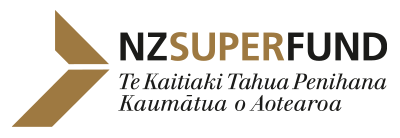Actual portfolio
The real-life composition of the Fund at any one time is called the Actual Portfolio. It is the sum of all the investments we have made which reflect the Reference Portfolio, plus any value-adding "active" investments.
Investment opportunities come and go. So the Actual Portfolio can – and usually does – deviate from the Reference Portfolio, based on what additional activities are both possible and, in our view, will add value.
The composition of the Actual Portfolio is disclosed in our Annual Reports.
Actual Portfolio Exposures as at 30 June 2025*
* Excludes the impact of any strategic tilts.
Active and passive investment
Active investing is difficult and is not worth doing in many markets, and we agree that active investing costs more. This is why around half of the Fund is managed passively – in line with an index-linked reference portfolio.
But active investment has some big benefits: in our case, it allows us to increase diversification and fully utilise our natural advantages. As a result, we have earned significant rewards with little additional risk.
We have two relevant investment beliefs:
- the ability to consistently generate excess returns from skill vs an appropriate benchmark (net of fees) is rare; where this ability exists, it is hard to access.
- investors with a long-term horizon can out-perform more short-term focused investors over the long-run.
The first belief forces us to be very clear about why any particular active strategy could improve the performance of the Fund (whether through lower risk or higher return, or both). Our commitment to selective active investing is informed by research and best practice in the investment industry and supported by well-established views in the industry.
The second belief is relevant to how we choose to undertake active investing. The Guardians has some natural advantages which means it is ideally placed to be a successful active investor. It has a long time horizon, a known liquidity profile, operational independence from the government of the day and sovereign status. We combine these advantages with a disciplined, transparent approach that keeps all active and passive investment decisions separate.
The Reference Portfolio forms both the core of the Fund’s actual portfolio and its passive benchmark, a hurdle that active investments have to surpass to add value. It clearly establishes the opportunity costs of all of the Fund’s active investment decisions. We invest actively only when there are clear benefits (after all costs) in doing so. We carefully determine the amount of risk that can be taken in different areas.
Active investing, within well-defined constraints, is both prudent and commercial for an institutional investor with a long horizon and the discipline to stay the course.
Adding value to the reference portfolio
Around half of the Fund is invested passively, in line with global market indices. We only undertake active investment when we have a high level of confidence that it will, over the long term, be better than investing passively – by either improving the Fund’s returns, reducing risk (e.g. through diversification) or both.
For each investment, we ask the basic questions:
- what’s the opportunity?
- what’s driving it?
- what risks are we taking on?
- are we properly compensated for these risks?
- how different is it to the Reference Portfolio?
- what’s the best, most cost effective way to access it?
- is there a liquid, public market alternative?
- how hard will it be to manage on an on-going basis?; and
- how confident are we in our answers to all these questions?
For any new investment, we must be confident that it is better than the simple, low-cost, passive alternative – that it will ‘add value’.
